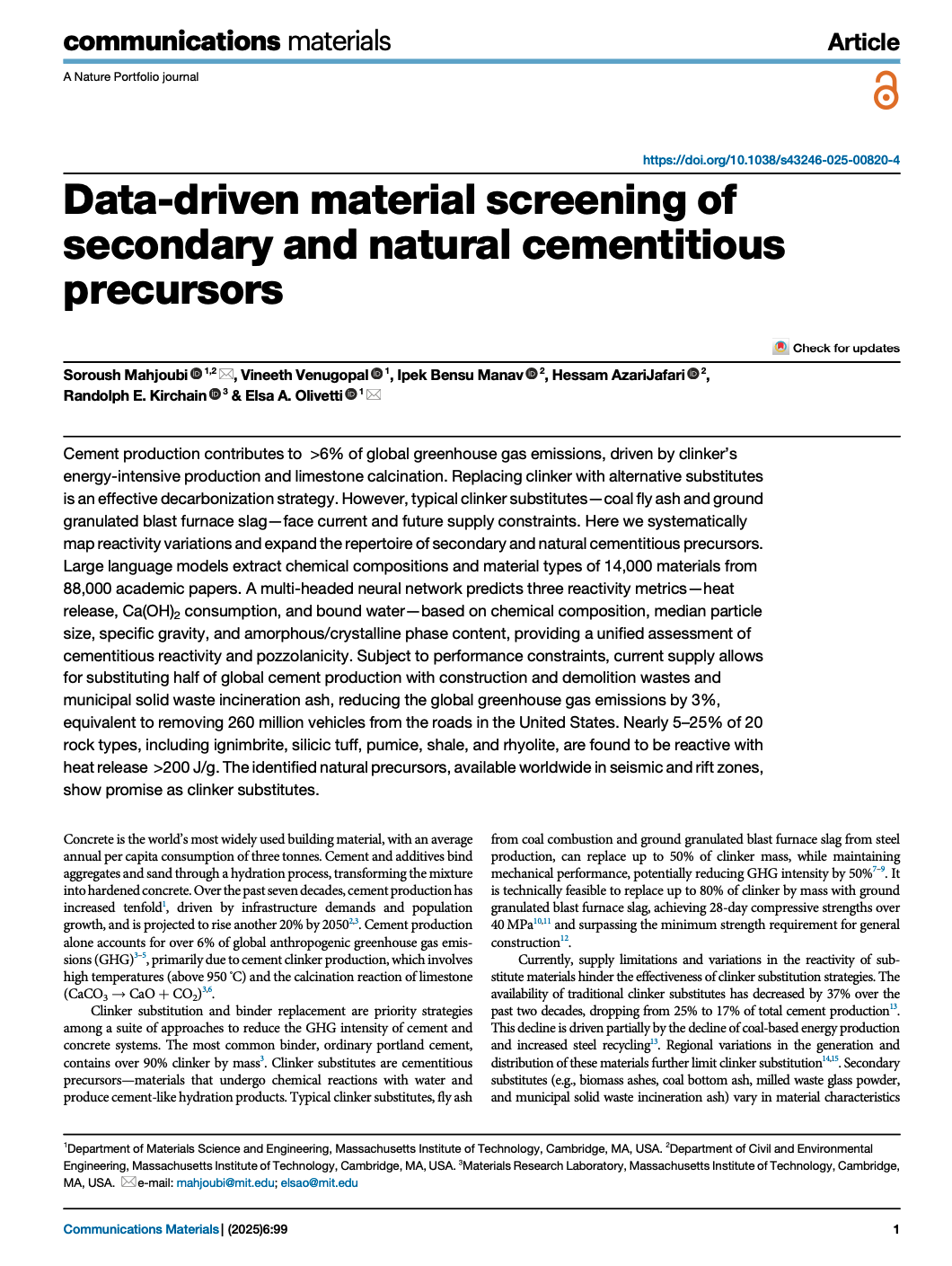Command Palette
Search for a command to run...
Data-driven material screening of secondary and natural cementitious precursors
Soroush Mahjoubi Vineeth Venugopal Ipek Bensu Manav Hessam AzariJafari Randolph E. Kirchain Elsa A. Olivetti

Abstract
Cement production contributes to >6% of global greenhouse gas emissions, driven by clinker’s energy-intensive production and limestone calcination. Replacing clinker with alternative substitutes is an effective decarbonization strategy. However, typical clinker substitutes—coal fly ash and ground granulated blast furnace slag—face current and future supply constraints. Here we systematically map reactivity variations and expand the repertoire of secondary and natural cementitious precursors. Large language models extract chemical compositions and material types of 14,000 materials from 88,000 academic papers. A multi-headed neural network predicts three reactivity metrics—heat release, Ca(OH)2 consumption, and bound water—based on chemical composition, median particle size, specific gravity, and amorphous/crystalline phase content, providing a unified assessment of cementitious reactivity and pozzolanicity. Subject to performance constraints, current supply allows for substituting half of global cement production with construction and demolition wastes and municipal solid waste incineration ash, reducing the global greenhouse gas emissions by 3%, equivalent to removing 260 million vehicles from the roads in the United States. Nearly 5–25% of 20 rock types, including ignimbrite, silicic tuff, pumice, shale, and rhyolite, are found to be reactive with heat release >200 J/g. The identified natural precursors, available worldwide in seismic and rift zones, show promise as clinker substitutes.
Build AI with AI
From idea to launch — accelerate your AI development with free AI co-coding, out-of-the-box environment and best price of GPUs.